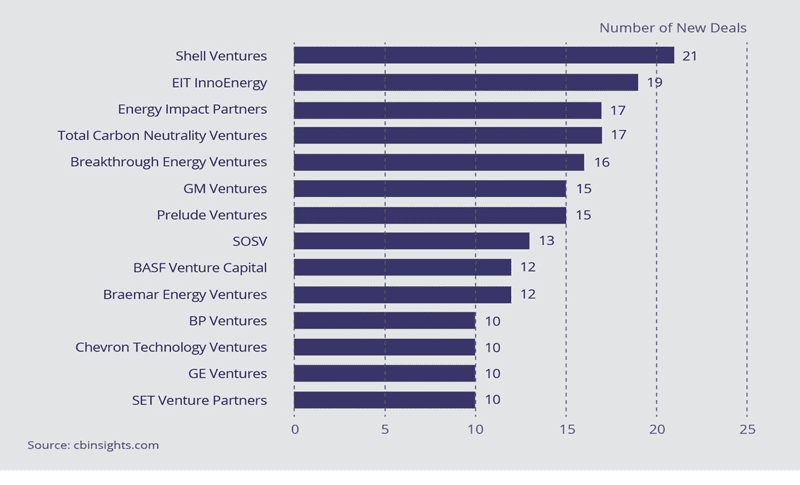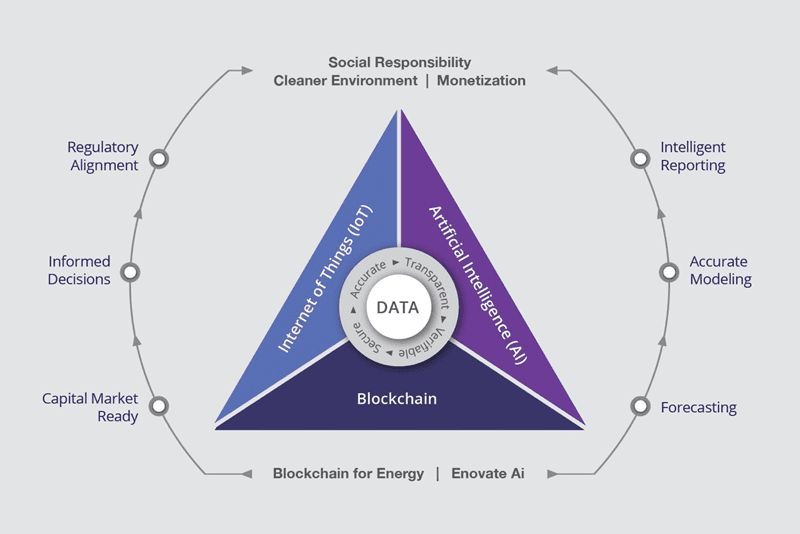New industry-led solutions are redefining operational efficiency and creating growth using automation, robust standards, and cutting-edge technologies.
Change is upon us. The industry must adapt to ensure it keeps pace with ever-evolving requirements and governmental regulations while attempting to balance the narrative in the court of public opinion. Embracing new technologies allows us to drive a successful path forward, manifesting our own course to meet stringent new regulations, and exceed expectations in combating carbon emissions.
When it comes to carbon emissions, determining a path forward is complicated. As many readers will confirm, the challenges facing the industry should not be underestimated. While these challenges are indeed monumental, we are almost out of time, but not out of options.
Securing the Future of our Energy Supply and Our Industry
Addressing these challenges requires a multifaceted, forward-thinking approach. Embracing technological advancements and utilizing them to industry advantage can help push the status quo threshold, the effects of which are yet to be fully realized and cannot be understated.
In the global energy landscape, several interconnected factors stand out as pivotal influencers of industry dynamics and policy making. Among these, artificial intelligence (AI), blockchain and the Internet of Things (IoT) are emerging as a nexus of critical considerations.
AI: Optimizing Energy Production and Distribution
Harnessing artificial intelligence (AI) as a tool in a standardized and measured way can lead to massive gains within the industry, particularly within the fold of optimizing energy production and distribution.
AI-driven predictive analytics can forecast energy demand patterns, enabling schedule adjustments and optimization of resource allocation.
Machine learning algorithms can analyse vast datasets from IoT sensors to improve efficiency in industrial processes. AI-powered energy management systems dynamically adjust operations based on real-time conditions, minimizing wastage and reducing costs.
Blockchain: Disrupting Energy Markets and Transactions
Blockchain technology offers decentralized, transparent and tamper-proof ledgers for recording transactions. Smart contracts, powered by blockchain, automate these transactions, ensuring secure and transparent agreements between parties. This innovation fosters the growth of renewable energy sources by incentivizing investment and participation in distributed energy systems. In addition, trust and transparency with environmental claims and transactions are enhanced, which increases stakeholder support.
IoT: Reshaping Energy Infrastructure and Efficiency
IoT revolutionizes energy systems by interconnecting devices, sensors and infrastructure to collect and analyse vast amounts of data in real-time. As an example, sensor equipped trucks can provide continual tracking of deliveries to enhance real-time operating expenses and can reduce manual reconciliations by up to 94 percent. This creates accurate processes that enable faster payments, empower greater decision-making, and significantly reduce service-to-payment times.
Aligning Innovation with Regulatory Guidelines
Balancing innovation with regulatory oversight is essential to harnessing the full potential of emerging technologies, while safeguarding against unintended consequences. In essence, the industry is best placed to advise how the industry works.
Collaborative efforts between governments, industry stakeholders, standards boards and technology innovators are crucial to addressing these challenges and driving responsible energy transformations. The intersection of IoT, blockchain, AI and U.S. policy stands as a focal point in addressing the world’s most pressing energy issues. By leveraging technology advancements and informed policy decisions, we can navigate toward a more sustainable, efficient and resilient energy future.
U.S. Policy: Strengths, Weaknesses and Opportunities
U.S. policy decisions exert significant influence on global energy markets and their developments in new technology. Regulatory frameworks, tax incentives, and government-funded research programs play a crucial role in shaping energy priorities.
The U.S. Energy Department’s initiatives support research and development in renewable energy, grid modernization, and advanced energy technologies. Policies aimed at promoting clean energy adoption, reducing carbon emissions, and enhancing energy security have far-reaching implications for global energy transitions.
Immense opportunities for advancing energy sustainability, energy security and accessibility are at the forefront as U.S. policies evolve alongside the growth and use of advancing technologies. To align with expectations, the industry faces some challenges including data privacy concerns, cybersecurity risks and, of course, regulatory complexities.
New Standards Call for a New Way Forward
Policies are shaping new standards that the energy industry must meet in a transparent and irrefutable way.
For example, in March, the U.S. Securities and Exchange Commission approved new requirements that public companies disclose their greenhouse-gas emissions. These new SEC rules mandate detailed climate-related disclosures in a company’s SEC filings, such as annual reports and registration statements.
According to a statement from the SEC, these updated rules “reflect the Commission’s efforts to respond to investors’ demand for more consistent, comparable and reliable information about the financial effects of climate-related risks on a registrant’s operations, and how it manages those risks, while balancing concerns about mitigating the associated costs of the rules.”
After a global review of efforts to address climate change during the 2023 United Nations Climate Change Conference (COP28), world leaders determined actions must be accelerated. This includes a call on governments to speed up the transition away from fossil fuels to renewables, such as wind and solar power, in their next round of climate commitments.
These examples show that the industry is at a pivotal moment and harnessing digital technology ensures not just survival, but the opportunity to thrive. To meet these new requirements, it is our opinion that the industry must empower digital technologies to provide deep insights. These investments in our future will help drive informed decision-making for emissions reduction strategies and efficient operations.
Top Investors in Energy Technology 2016 – 2020
 The wholly verifiable data provided by solutions such as AI, blockchain and IoT can help businesses meet the requirements for accurate, transparent and verifiable information today.
The wholly verifiable data provided by solutions such as AI, blockchain and IoT can help businesses meet the requirements for accurate, transparent and verifiable information today.
Embracing the Future of the Industry (and Reaping the Benefits)
As an industry, we are already adapting – developing and deploying comprehensive solutions that leverage these new systems.
As an example, Blockchain for Energy (a non-profit consortium of energy industry experts) has recently released B4E Carbon. It’s an emissions management solution, developed for the energy industry by the energy industry and powered using technology developed by Enovate AI. The solution provides an intelligent and ultra-secure digital framework for data-driven validation processes of environmental claims. It is available on a secure industry-approved platform and is used by a growing list of industry heavyweights.
How it works: The first Comprehensive Emissions Management System B4E Carbon
 B4E Carbon simplifies and automates mandatory EPA reporting. It is a vital tool for transparency and collaboration, data management, real-time monitoring, validation and verification – and claims reversal prevention. With an “operations-first mindset,” B4E Carbon emphasizes the integration of emissions management into core business operations, ensuring that emissions reduction becomes a priority at every stage of the value chain, driving continuous improvement in sustainability performance.
B4E Carbon simplifies and automates mandatory EPA reporting. It is a vital tool for transparency and collaboration, data management, real-time monitoring, validation and verification – and claims reversal prevention. With an “operations-first mindset,” B4E Carbon emphasizes the integration of emissions management into core business operations, ensuring that emissions reduction becomes a priority at every stage of the value chain, driving continuous improvement in sustainability performance.
When platforms like this are developed with industry standards and collaboration in mind, the result is greater transparency among stakeholders. This transparency can help build trust and facilitate cooperation, all of which are vital for addressing emissions management effectively.
Results That Speak for Themselves
The industry has an urgent need for accurate, transparent and verifiable emissions data. The integration of these new technologies provides an intelligent and ultra-secure digital framework, for data-driven validation processes of environmental claims, all while aligning with regulatory bodies and capital markets requirements.
The convergence of AI, blockchain and IoT represents a paradigm shift in the way industries operate. As the industry embraces these transformative technologies, it is essential to address concerns around data privacy, security and ethical implications. Collaborative efforts between industry stakeholders, policymakers and technologists are crucial to ensuring that the benefits are harnessed responsibly and sustainably.
New technologies, such as the B4ECarbon solution, now offer unprecedented opportunities for digitalization, optimization and monetization. They also offer a route through decarbonization while conforming to industry standards and helping businesses thrive.
Rebecca Hofmann is an accomplished finance and compliance leader with over 20 years of experience in the energy industry. Her past operational assignments have covered the development and improvement of processes over governance and compliance to support onshore and offshore operations. She is the founder and visionary behind the Blockchain for Energy consortium — where she is the standing CEO and served as chairman of the board two years prior. Hofmann’s many industry awards and accolades include the 2018 GRIT Award for Creativity and Innovation, the 2019 GRIT Award for her team’s work in emerging technologies, and the 2021 Global Supply Chain Leaders Blockchain CEO of the Year Award. She has also authored several thought leadership articles related to blockchain technology.






